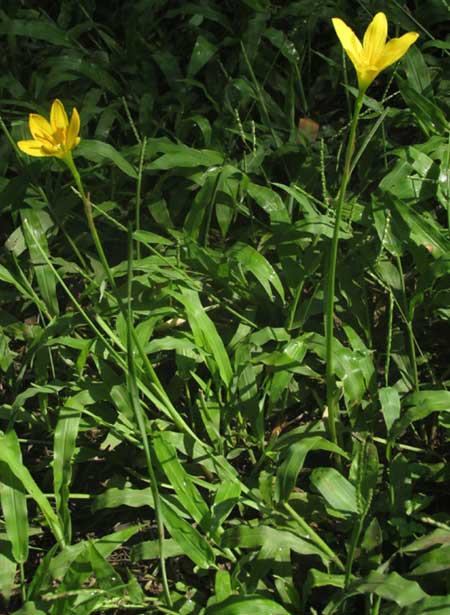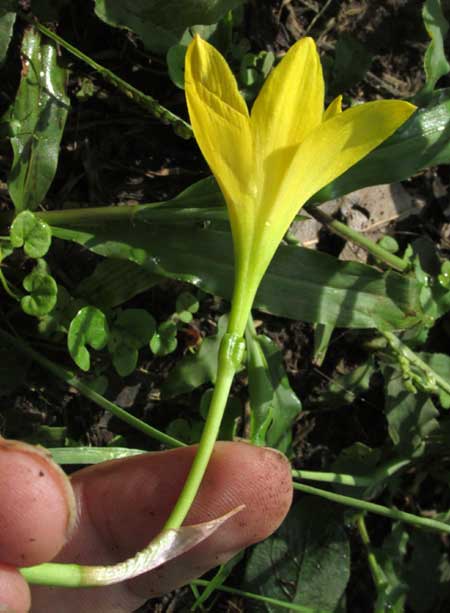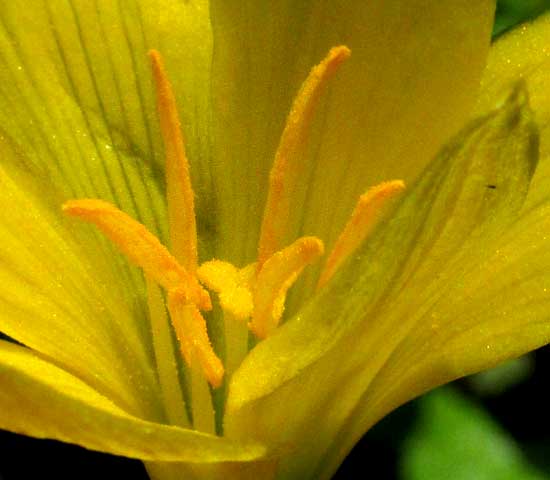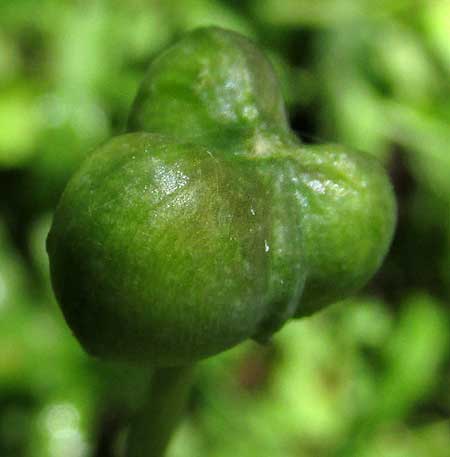Excerpts from Jim Conrad's
Naturalist Newsletter
from the August 28, 2016 Newsletter issued from Hacienda Chichen Resort beside Chichén Itzá Ruins; limestone bedrock; elevation ~39m (~128ft), N20.675°, W88.569°; central Yucatán state, MÉXICO
YELLOW RAIN-LILIES
In a partially shaded grassy area at the Hacienda this week a large area of yellow flowered, naturally occurring wildflowers/weeds blossomed very prettily amid the lush greenness, a small portion shown below:

Up closer you see that each vertically aligned flower perches atop a slender, leafless, hollow stem, shown below:

The blossoms themselves are funnel-shaped, the whole corolla/calyx structure, or perianth, set atop a bulging, three-lobed ovary, and the ovary itself atop a peduncle extending a good bit above the subtending onion-skin-textured spathe, as shown below:

Inside the flower we see the expected six stamens crowded around a three-lobed stigma, shown below:

Something barely observable in that photo is that the stamens are of two lengths. Despite the difference not being too obvious, that feature is important in determining the genus.
Some plants had been flowering for over a week and already bore immature, capsule-type fruits, such as the one shown below:

This is ZEPHYRANTHES CITRINA, sometimes called the Yellow or Citron Rain-lily. It's native homeland isn't know because it's been carried worldwide by humans, planted in gardens, and often escaped into tropical and subtropical landscapes. In the US sometimes it turns up in Florida, Alabama and Mississippi, plus it's scattered in the Caribbean area, Mexico, Central and South America. The Pacific Bulb Society, which normally is fairly authoritative, says flatly that it's native to the Yucatan Peninsula, without mentioning other places, but the even more authoritative Flora of North America asserts that "... considerably more work is needed to determine its native distribution."
Interestingly, another species, Zephyranthes flavissima of South America, is so similar to our Zephyranthes citrina that photos of the two species on the Web are impossible to tell apart. However, our Zephyranthes citrina has 48 chromosomes while Zephyranthes flavissima bears only 14. This suggests that our Zephyranthes citrina may have arisen abruptly from the South American parent when chromosomes during meiosis didn't separate as they were supposed to in the South American species, resulting in our "polyploid."
With regard to propagation, the Pacific Bulb Society says that Zephyranthes citrina doesn't produce many offsets that can be used to build up a population, but it makes up for that by "abundant apomictic seed production," meaning that seeds are produced without fertilization taking place. Such seeds would produce more or less "clones" of the parent.
Zephyranthes species are very similar to those of the genus Habranthus, which also are called rain lilies. Habranthus flowers, however, point upward at an angle, while Zephyranthes blossoms point straight up.